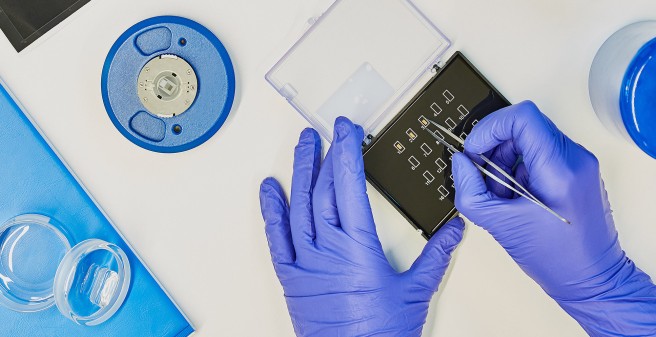The Cell Adhesion Lab
Cell-cell adhesion: Crucial to all multicellular organisms
In the Spindler group, we investigate how the mechanical coupling of cells determines cellular functions and tissue homeostasis.
In particular, we study the function of desmosomes under physiological conditions and in diseased states. Desmosomes are adhesive complexes required to strongly tether cells and confer integrity and mechanical resistance to epithelia and other tissues. In recent years, it became increasingly evident that these structures form more than just “glue” between cells but are actively involved in integrating extracellular signals with cellular behavior. Dysfunction of desmosomes causes potentially fatal diseases mainly affecting the skin and the heart.
The lab seeks to:
- comprehensively understand the basic function of desmosomes
- identify hitherto unknown regulators of cell-cell adhesion
- determine pathophysiological principles of life-threatening diseases such as Pemphigus and Arrhythmogenic Cardiomyopathy
- deduce novel therapeutic approaches based on improved disease understanding
Desmosome functions in the epidermis
Using reconstituted 3D skin equivalents, organoids, and mouse models, we aim to understand the contribution of desmosomes and individual desmosomal molecules to the differentiation and homeostasis of the epidermis. Recent publication: Rathod et al., J Cell Biol., 2024
Novel regulators of desmosomal adhesion
- We apply unbiased approaches such as whole genome CRISPR knockout screening to identify so far unknown regulators of cell-cell adhesion. The results will serve to test new approaches for tuning adhesion, e.g., as a therapeutic application in a disease setting. Recent publication: Franz et. al., Nat Commun., 2024
From impaired adhesion to Arrhythmogenic Cardiomyopathy (ACM)
ACM patients develop potentially fatal arrhythmia and structural alterations of the myocardium. In the majority of cases, the disease is caused by mutations in desmosomal genes. We have recently developed a novel mouse model that faithfully reproduces the disease phenotype ( Schinner et al., Circulation, 2022 ). We currently use this and other models together with cutting-edge “-omics” techniques to define disease drivers and elucidate and test novel therapeutic approaches.
Tuning adhesion as therapeutic approach in the blistering skin disease pemphigus
The autoimmune disease pemphigus is characterized by the development of autoantibodies targeting components of the desmosome. This causes weakening of cell-cell adhesion in the epidermis and mucous membranes, resulting in blistering and erosions. By modulating specific pathways relevant to cell-cell adhesion, we evaluate in 2D and 3D cell cultures and mouse models the efficacy of protecting against the harmful effects of the autoantibodies. Recent consensus review: Spindler et al., J Invest Dermatol., 2018 .
